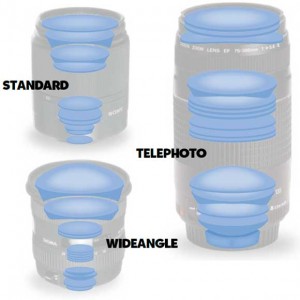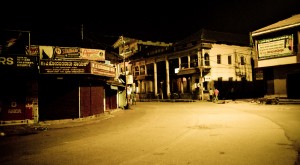The Camera Lens is actually a complicated yet excellently precise device. It consists of optical lens elements, lens motors, aperture and Vibration Reduction mechanism all working in a beautiful synchronization (the shutter used to be a part in older camera lenses, but has been moved to just in front of the sensor in the new models).
Out of these, the optical lens elements and the aperture are the ones which actually do the photography action, other mechanism work as support groups. Since by now you are already familiar with Aperture, we will discuss more about it in Depth of Field. For now let’s talk about the lens elements.
All camera lenses comprise of several optical elements. These optical elements are lenses arranged in such a way that they direct the path of light to recreate the image as accurately as possible. Needless to say, the longer the focal length, the more will the number of optical elements.
Based on construction, the two main categories of lenses are:
Prime Lenses
Prime Lenses have fixed focal length and in most cases a variable aperture. As such, you do not get a zooming capability with them and there is a lot of nimble foot work required to get the right composition.
The main characteristics of Prime Lenses are:
- They are sharper and often faster, thus bettering the image quality and the overall experience
- Are smaller and lighter
- Have maximum aperture thus a better Depth of Field
- Are lighter and smaller
- Are less versatile
Zoom Lenses
Zoom lenses are lenses with variable focal lengths. Their zooming capability enables taking photographs of a subject at different magnification without the need to move or change lens.
- Versatile and cover a bigger range of focal lenses
- Ideal for travel photography when changing lenses is cumbersome
- Easier to achieve a variety of compositions
- The image quality is not as great as the prime lens and the aberrations are more
Focal Length of a Lens
The focal length of a lens influences angle of view and the magnification of the image. Based on the focal length, lenses can be characterized into the following categories:
- Wide Angle Lenses
- Extreme Wide Angle : Less than 21 mm
- Wide Angle: 21-35 mm
- Normal Lenses : 35-70 mm
- Telephoto Lenses
- Medium Telephoto : 70-135 mm
- Telephoto : 135-300 mm
- Ultra Telephoto : 300+ mm
Wide Angle Lenses: A lens is considered wide angled if its focal length is less than 35mm (or equiv). In a wide angle lens, the image encompasses a wide angle of view and has generally close minimum focusing distance. In a wide angled view, both the relative size and relative distance are exaggerated when comparing the near and far objects. Due to this, the nearer objects look disproportionately large and far away ones look very tiny, thus placing more emphasis on the foreground. This can produce weird photographs in Portraits with disproportionate features. Wide angle lenses are thus best suitable for landscapes and architecture (though they make parallel lines appear converging) and should not be used in people photography (unless there is an overflow of creative juices).
Normal Lenses: As mentioned, all lenses between 35-70 mm come under the category of normal lenses. These lenses give a normal view without much distortion and are better suited for taking photographs which need to stay close to dimensional accuracy. Normal lenses are good for Regular Street and people photography. 50-70mm is the recommended range for portrait photography.
Telephoto Lenses: The telephoto range starts from 70 mm upwards. These lenses provide magnification to the image and also impart shallowness to the photograph. As a result, the images taken by telephotos are somewhat flatter when compared to other ranges. Telephoto lenses are used to take distant images as well as in situations like there are specific requirements like normalization of relative size, crowd density, close cropping etc. Ideal for wildlife, candid portraits and some landscape.



Interesting pictures, can you suggest me a reliable,cheap and worthy camera(SLR), i just love photography, i had canon D series and i lost it 🙁 which is best in the range of 20K ?
Hi Deepak,
Thanks, Well If you want a budget DSLR in Nikon, you can go for D3000, or a D3100 (D3100 is a bit costlier than D3000 but much better)
In Cannon, I just loved the way EOS 550 D takes pictures. However for the sake of economy, you can look at EOS 1100D and EOS 1000D models. EOS 1000D starts at Rs 22600.
Hope this answers your question.
Happy Clicking !
Thanks
Puru
I have a Canon 28-135.Photos of landscapes dont come quite good with this.The 18-55 fares a lot better.Can you reason this for me?
28-135 for a cropped sensor will become around 42-200 mm .. This not sufficiently wide lens. For a landscape photograohy, wide angle lens is a better option. Wide angle also brings more depth to the picture. Try taking a landscape with low aperture and wide angle and it will mostly come good.